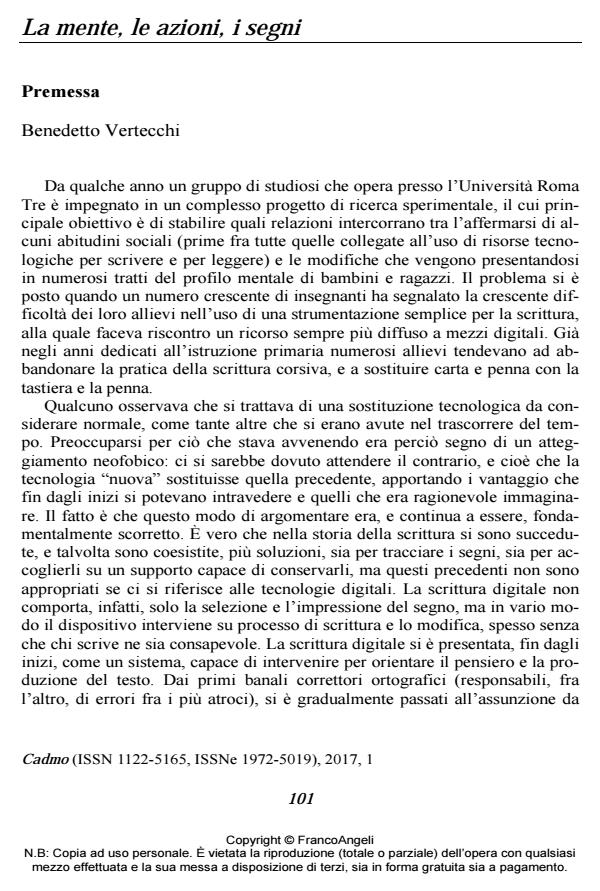La mente, le azioni, i segni. Premessa
Journal title CADMO
Author/s Benedetto Vertecchi, Cinzia Angelini, Antonella Poce, Emma Nardi, Francesco Agrusti, Nader Harb
Publishing Year 2017 Issue 2017/1
Language Italian Pages 18 P. 101-118 File size 433 KB
DOI 10.3280/CAD2017-001010
DOI is like a bar code for intellectual property: to have more infomation
click here
Below, you can see the article first page
If you want to buy this article in PDF format, you can do it, following the instructions to buy download credits

FrancoAngeli is member of Publishers International Linking Association, Inc (PILA), a not-for-profit association which run the CrossRef service enabling links to and from online scholarly content.
Benedetto Vertecchi, Cinzia Angelini, Antonella Poce, Emma Nardi, Francesco Agrusti, Nader Harb, La mente, le azioni, i segni. Premessa in "CADMO" 1/2017, pp 101-118, DOI: 10.3280/CAD2017-001010